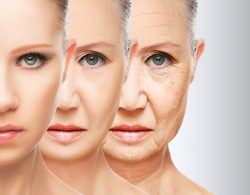Fried Food Linked to Early Death
 It certainly is no secret that fried food is not a healthy type of food. Almost one third of North American adults consume fast food every day. A new study published in The BMJ shows exactly how eating fried foods affects our health over time. It also shows which fried foods are the worse for us. Previously there has been very little scientific evidence related to the risk of death being linked to fried foods.
It certainly is no secret that fried food is not a healthy type of food. Almost one third of North American adults consume fast food every day. A new study published in The BMJ shows exactly how eating fried foods affects our health over time. It also shows which fried foods are the worse for us. Previously there has been very little scientific evidence related to the risk of death being linked to fried foods.
The researchers analyzed about 20 years of data for close to 107,000 older women in the United States ages 50 to 79. These women were all enrolled in the Women’s Health Initiative Study. They were asked to fill out detailed questionnaires in regards to their dietary habits between 1993 and 1998. The health of these women was followed by researchers through 2017. During that period more than 31,500 of the women had died. This included 9,320 deaths related to heart disease, 8,358 related to cancer and 13,880 from a variety of other causes.
The research team looked at the specific and total consumption of a variety of fried foods. These foods included fried chicken, fried fish and fish sandwiches and shellfish, french fries, tacos, tortilla chips and variety of other fried snacks. The team also took into account other potentially influential factors such as overall diet quality, lifestyle, income and education level.
The women who ate one or more servings of a fried food on a daily basis had an 8% higher risk of dying from a heart related disease than those who did not eat fried food. And they also had an 8% higher risk of dying early. Fried chicken and fried fish were most strongly related to early death than other fried foods. These other fried foods were grouped in a separate category so they were not looked at specifically.
What they found was that eating more than one serving of fried chicken per day had the potential of a 13% higher risk of death from any cause. They also found a 12% higher risk of deaths related to heart disease compared with those who did not eat fried food. Similarly, fried fish and shellfish was found to be linked to a 7% higher risk of death from any cause and a 13% higher risk of deaths related to heart disease compared to those who did not eat fried food.
The strength of the fried chicken and fried fish might be simply because people consume more of these food items or because of differences in how these foods are prepared. Many restaurants for example reuse frying oil which they cook foods like fried chicken in. This may increase the number of harmful by products which can be transferred to the food. And meats tend to be more deeply fried than other fried foods. However, this does not absolve the unhealthy affects of other fried foods.
Interestingly, consumption of fried food did not appear to correspond to a higher risk of dying from cancer although previous research had connected the two. What that research found was that diet is important for cancer prevention and survival, but not all dietary components appeared to be equally important.
Since this new study was an observational study, it does not prove cause and effect as it was impossible to rule out other factors that affect health. And it did not reflect how women might have changed their diet over time. However, the scientists believe the findings are very strong and very likely apply to populations other than the older women who participated in the study such as younger women and men.
There are many studies that have linked fried foods to a variety of health issues such as obesity, type 2 diabetes and heart disease. The current study indicates the link between consumption of fried foods and early death. Reducing the consumption of fried foods and especially fried fish and fried chicken indicate clinically meaningful impact across the public health spectrum.
To view the original scientific study click here: Association of fried food consumption with all cause, cardiovascular, and cancer mortality: prospective cohort study



 The worldwide population of people age 60 and over is growing faster than all of the younger age groups. The result is a growing occurrence of chronic disease and lower quality of life which is challenging healthcare and economic systems. Scientists from Gero and MIPT have collaborated with researchers from the University of Edinburgh, PolyOmica and other institutions to analyze medical histories and genetic data of more than 300,000 people aged 37 to 73 which was made available by UK Biobank.
The worldwide population of people age 60 and over is growing faster than all of the younger age groups. The result is a growing occurrence of chronic disease and lower quality of life which is challenging healthcare and economic systems. Scientists from Gero and MIPT have collaborated with researchers from the University of Edinburgh, PolyOmica and other institutions to analyze medical histories and genetic data of more than 300,000 people aged 37 to 73 which was made available by UK Biobank. Results from a new study have suggested that social jet lag may play an important role in circadian markers for health outcomes. Social jet lag occurs when a person goes to bed and wakes up later on weekends than they normally do during the week. Findings suggest this can be associated with worse mood, poorer health and increased fatigue and sleepiness.
Results from a new study have suggested that social jet lag may play an important role in circadian markers for health outcomes. Social jet lag occurs when a person goes to bed and wakes up later on weekends than they normally do during the week. Findings suggest this can be associated with worse mood, poorer health and increased fatigue and sleepiness. Want to ramp up your metabolism and help reverse some signs of aging? New research has uncovered previous unknown effects of fasting which include increased metabolic activity and newly identified anti-aging benefits.
Want to ramp up your metabolism and help reverse some signs of aging? New research has uncovered previous unknown effects of fasting which include increased metabolic activity and newly identified anti-aging benefits. According to research from the Netherlands Cohort Study (NLCS), men’s and women’s lifespans differ. Weight and body size may influence the lifespan of women more than it does the lifespan of men. The thought is factors such as genes, hormones and/or lifestyle are how the two different sexes are influenced.
According to research from the Netherlands Cohort Study (NLCS), men’s and women’s lifespans differ. Weight and body size may influence the lifespan of women more than it does the lifespan of men. The thought is factors such as genes, hormones and/or lifestyle are how the two different sexes are influenced.



